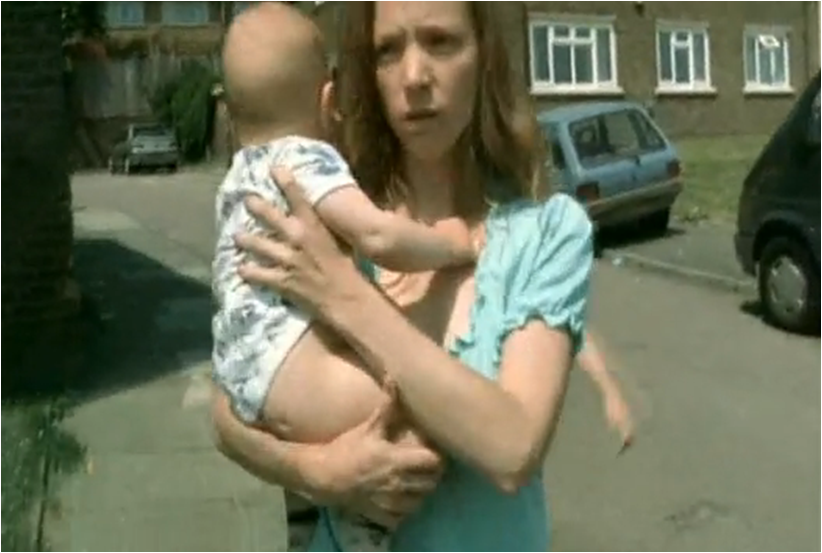…with a much longer story.
This movie hit me very hard because just this morning, I was so upset and complaining about my life. I was thinking about how all my friends are going to fancy and expensive schools, how I can’t get everything my friends get, etc. And then a few hours later, I saw this film that put my life in perspective.
When Wasp first started, I first thought the family was getting evicted from their home. The raw, choppy footage, the dim lighting, and the grainy view all created the picture of a poor, somewhat broken family. When I’ve seen TV shows and movies on one of those giant-screen-HDTV televisions, I always felt like I was living in the movie. Although this footage was not a super high quality like an HDTV – it was the exact opposite – this videography made this movie also come alive, in a kind of different way.
I found so much symbolism in this film – namely, obviously, the wasp. At first we see the main character, watching the wasp on the window sill, and then she opens the window, and the wasp flies away. It is free. And she is watching, wistfully, I think, imagining what it would be like to just fly out that dirty window into the wide open world. And then, through the rest of the film, we see her running to start a fight with her neighbor, running to the bar, running to an old car to fool around with a guy. We see her trying to escape from the reality of her life. This is completely understandable, as her life is obviously terrible and any normal person would try to find a way to escape. Unlike the wasp, she is a person, and people can’t do that – we can’t just escape.
I think it’s so interesting that Andrea Arnold was the oldest of four when she was growing up – I think she chose the oldest daughter in the film to portray herself growing up. Because the film seemed to end on a somewhat uplifting note, I couldn’t really tell if Andrea was trying to spin a positive or negative perspective on the story. I came to the conclusion that Andrea was creating a neutral voice, not putting her opinion, in the movie. She was showing us the reality, painting for us the stark picture, of what that kind of life – her life – is. The perseverance to live in that world, the brutality and the horror, the effects it can have on people, the lengths people take to try to break free, the strength one learns to go on. And she lets the viewer decide what to make of it, what his opinion of that kind of life really is.

 creates a film which is almost tangible to the viewer, as if he is with the characters and in their situation. With the close-up and zoomed-in footage, the viewer actually feels like he is trapped and caught in the drama. I think this film is based on conflict and that’s what makes it so real. I’m ambivalent in my reaction towards Zoe. On the one hand, her actions are unreasonable, but on the other hand, they are completely understandable. Also, there were so many moments during the film that I thought something tragic was about to happen: the kids would be run over by a car in middle of the street, or the four seemingly-drunk teenagers would do something, etc., but nothing catastrophic happened, and the even ended on a positive note. Arnold probably put in these scenes to amplify the realism: there is potential here for something bad to occur and the viewer is in midst of all of it.
creates a film which is almost tangible to the viewer, as if he is with the characters and in their situation. With the close-up and zoomed-in footage, the viewer actually feels like he is trapped and caught in the drama. I think this film is based on conflict and that’s what makes it so real. I’m ambivalent in my reaction towards Zoe. On the one hand, her actions are unreasonable, but on the other hand, they are completely understandable. Also, there were so many moments during the film that I thought something tragic was about to happen: the kids would be run over by a car in middle of the street, or the four seemingly-drunk teenagers would do something, etc., but nothing catastrophic happened, and the even ended on a positive note. Arnold probably put in these scenes to amplify the realism: there is potential here for something bad to occur and the viewer is in midst of all of it.







